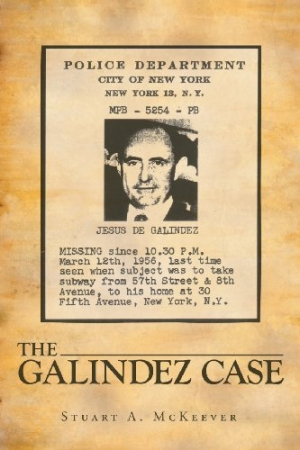
The Galindez Case
A kidnapping and murder ordered by a dictator, a web of lies and deceit by the US government, and Cold War calculations: it’s not a spy novel. It all really happened.
The story of how Jesus de Galindez, a Columbia University professor, was kidnapped and killed by agents for Dominican Republic leader Raphael Trujillo in 1956 is complex and littered with double agents, government officials who wish to remain anonymous, midnight flights out of the country, and evil dictators supported by the United States government because they were anti-communist. The Galindez Case tackles this tangled web.
The story itself is fascinating. Galindez disappeared shortly after his dissertation criticizing Trujillo’s government was accepted. Even though Galindez was working for the US government as a confidential informant at the time, the US turned a blind eye to Trujillo’s actions because the brutal dictator was considered a force against communism.
It is clear that vast amounts of research went into this book. But a topic as complex as this case requires a deft hand to make it clear and understandable. The text struggles under the weight of too much extraneous information and unnecessary repetition. For example, the entire backstory of the pilot who flew the plane that whisked Galindez out of New York is provided, including his moves from North Dakota to Oregon. This information only obscures the crimes committed against Galindez. Tighter editing would have focused on the pertinent events of the abduction, murder, and investigation. On a single page, the same details chronicling Galindez’s death are reported twice within two paragraphs.
As author Stuart A. McKeever began to delve into the case, he was stonewalled at every turn by the US government. At one point, the government claims some of the reports McKeever was attempting to access under the Freedom of Information Act did not exist, although they were produced in 1979 during someone else’s request for the documents.
This volume should read as a world-class spy novel with all of the shenanigans and double-agenting happening throughout, including FBI Director J. Edgar Hoover claiming the abduction was a publicity stunt perpetrated to sell books. The government refused to help Galindez before he was kidnapped and did not acknowledge his role as an informant. Unfortunately, the confusing presentation of events and facts spoil the book’s spy novel potential.
Each of the thirty-five chapters is titled, and while the focus is generally on the chapter’s titled topic, transitions are not always used to point readers in a new direction—thus it is a challenge to keep the multitude of characters and events straight.
The Galindez kidnapping and death is a little-known event in American history. But, unless the reader comes to the text with prior knowledge or is willing to do some research while reading, this book may prove challenging for the casual American history/true crime reader. Still, McKeever has worked tirelessly to bring the facts to light. His research and dogged determination to obtain information should be applauded.
Reviewed by
Lynn Evarts
Disclosure: This article is not an endorsement, but a review. The publisher of this book provided free copies of the book and paid a small fee to have their book reviewed by a professional reviewer. Foreword Reviews and Clarion Reviews make no guarantee that the publisher will receive a positive review. Foreword Magazine, Inc. is disclosing this in accordance with the Federal Trade Commission’s 16 CFR, Part 255.
